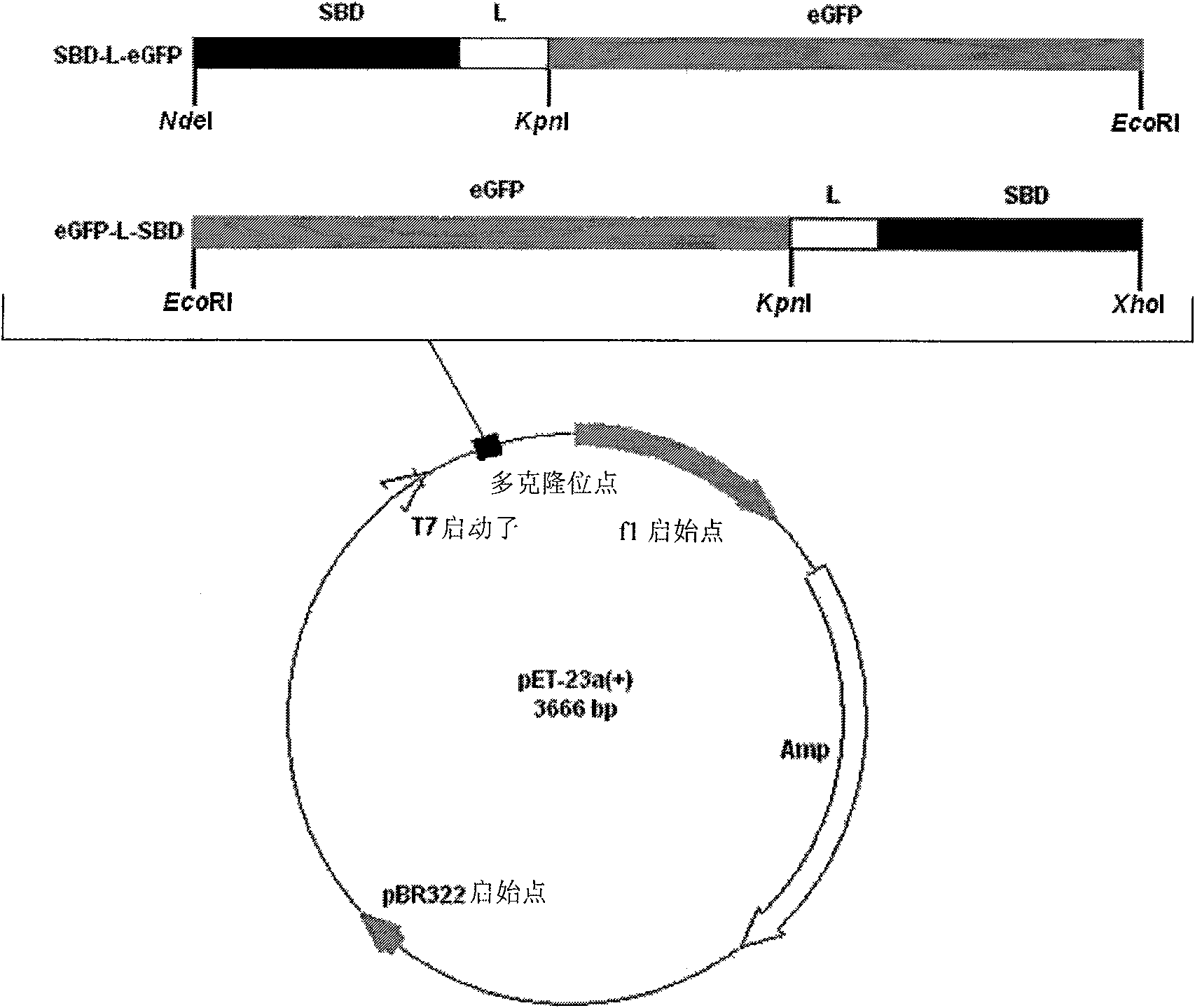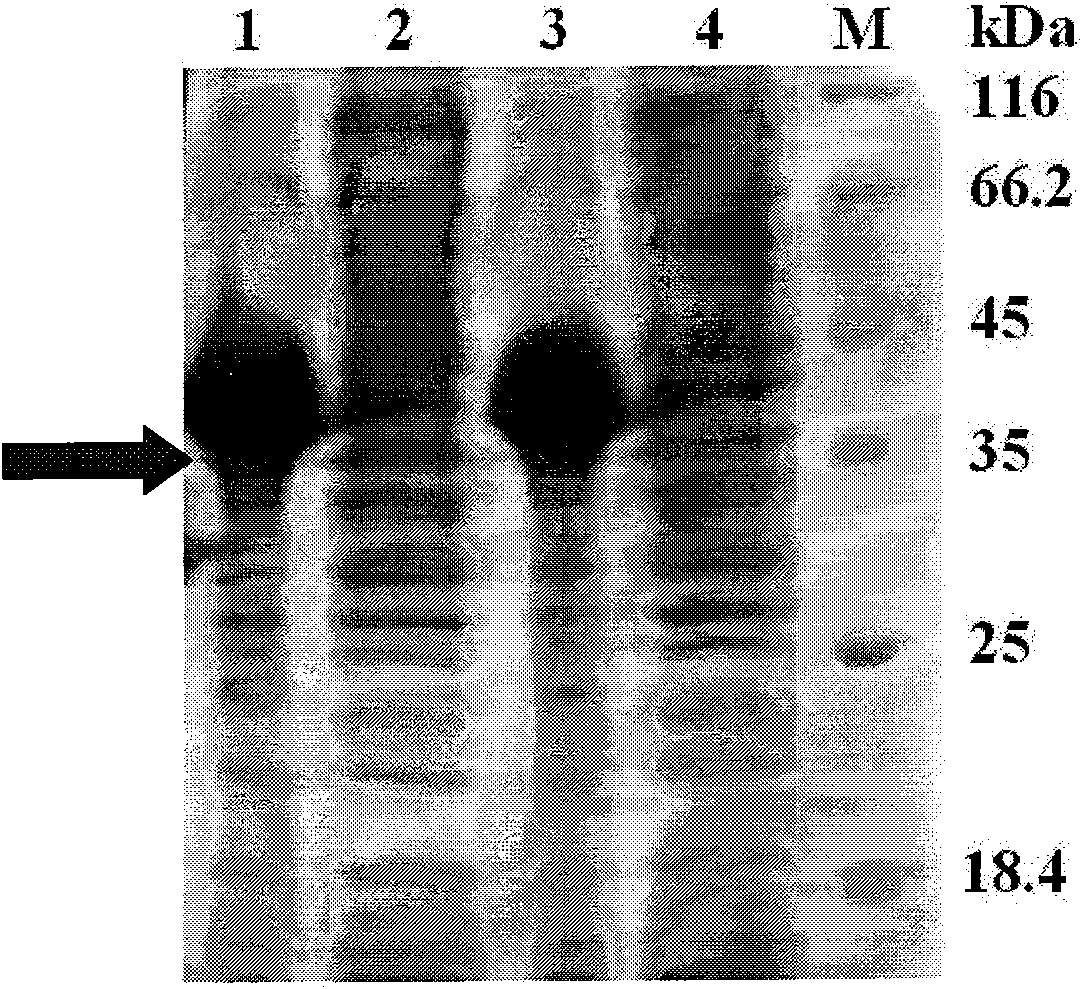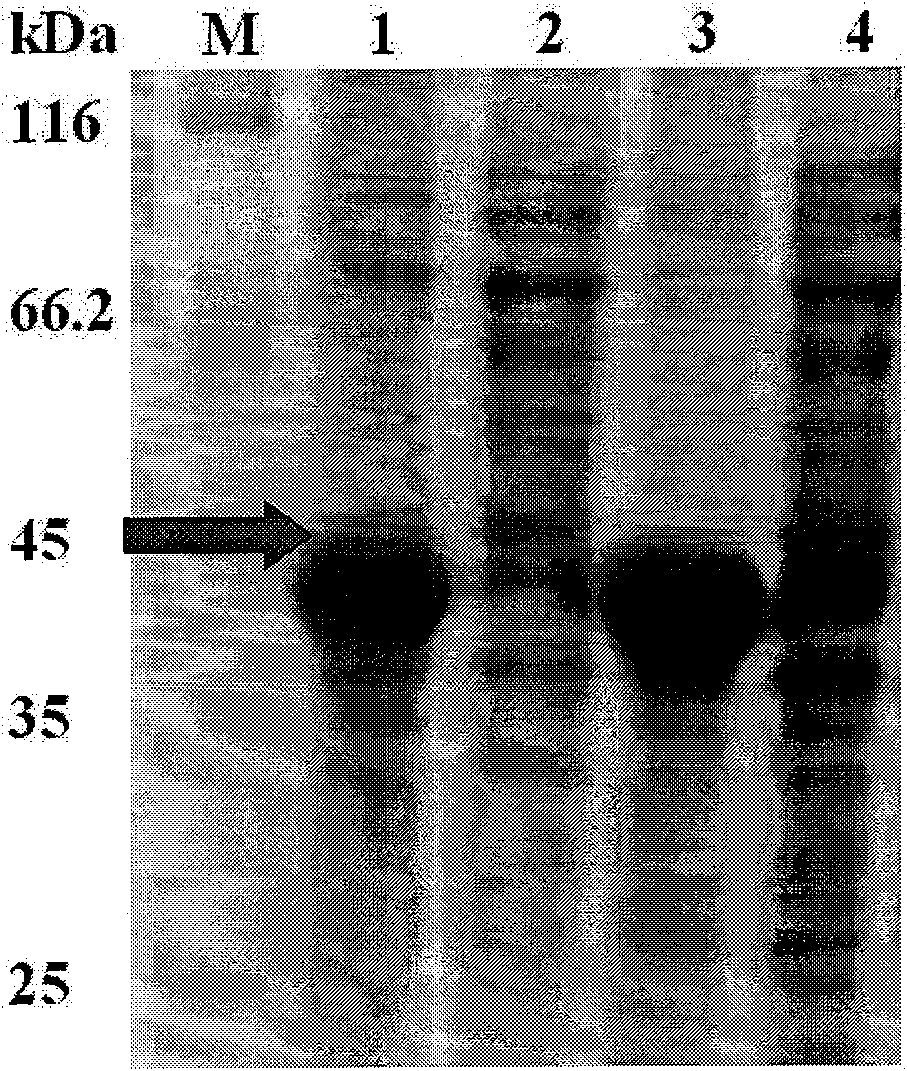Starch binding domain and use thereof
A starch and region technology, applied in the direction of introducing foreign genetic material, peptides, enzymes, etc. using vectors, can solve the problems of inconvenient purification process, expensive and laborious purification columns, etc.
- Summary
- Abstract
- Description
- Claims
- Application Information
AI Technical Summary
Problems solved by technology
Method used
Image
Examples
Embodiment 1
[0049] (A) Construction of plasmid
[0050] The construction of the recombinant vector is as follows figure 1 shown. The eGFP, linker and SBD fragments were all amplified by PCR with the designed primers, and the primer sequences are shown in Table 1. The linker sequence can be replaced by the following five candidate sequences (RoLK: linker of Rhizopus oryzae GA, PH: six histidines, PK: eight lysines, PPT: one threonine and four proline-threo Amino acid repeat sequence [T(PT) 4 ] and 58L: the region between the restriction sites SpeI and NcoI on the vector pET39b(+). The procedure of the PCR reaction was as follows: mix 10 ng template, 0.5 μl of each primer (10 μM), 5 μl of reaction buffer (10×), 5 μl of deoxynucleotide (2.5 mM), 0.8 μl of Ex Taq DNA polymerase (Takara Mirus Bio, Japan , 5U / μl), add water to a final volume of 50 μl. This mixture reacts according to the following cycles: 1 cycle of 95°C / 5 minutes → 30 cycles of [95°C / 30 seconds (high temperature denaturat...
Embodiment 2
[0079] (A) Effect of pH value on adsorption capacity
[0080] In the experiment of testing the effect of pH value on the adsorption capacity, the purified fusion protein (16 μM) was stirred into cornstarch buffer (Sigma-Aldrich, EC 232 -679-6, USA) for about 1 hour. Binding assay at pH 2.0-11.0 buffer [100mM glycine / hydrochloric acid (pH 2-3), 100mM sodium acetate / acetic acid (pH 4-5), 100mM Na 2 HPO 4 / NaH 2 PO 4 (pH 6-7), 100mM Tris / HCl (pH 8), 100mM glycine / sodium hydroxide (pH 9-11)]. The concentration of the unadsorbed fusion protein in the supernatant before and after adsorption was determined by bicinchoninic acid reagent set (BCA assay). The relative adsorption capacity of 100% fusion protein is based on the measured value at pH 5.0.
[0081] (B) Effect of temperature on adsorption capacity
[0082] In the experiment of testing the effect of temperature on the adsorption capacity of starch, the purified fusion protein (16 μM) was stirred into the adsorption buff...
Embodiment 3
[0095] (A) Structure determination by NMR spectroscopy
[0096] NMR data were analyzed with a Bruker Avance 600MHz or 800MHz spectrometer. For structure determination, 1 mM RoCBM21 (unlabeled, 15 N-flag or 13 C, 15 N-double label) was dissolved in 10 mM sodium acetate, pH 4.5, for NMR experiments at 25°C. Protein concentration was quantified with bicinchoninic acid reagent kit (Bio-Rad Protein Assay). Skeleton assignments were performed with HNCA, HN(CO)CA, HNCACB, CBCA(CO)NH, HNCO and HN(CA)CO experiments (Cavanagh, J. et al., (1996) Protein NMR spectroscopy, Academic Press Inc .). Since RoCBM21 contains a relatively high proportion of aromatic residues, the assignment of its aromatic branch was assisted by HBCBCGCDHD and HBCBCGCDCEHE experiments (Yamazaki, T. et al., (1993) J.Am.Chem.Soc.115, 11054 -11055). The remaining atoms are assigned by homonuclear two-dimensional nuclear Overhauser enhancement spectroscopy (NOESY) and 15 N heteronuclear single-quantum coherenc...
PUM
 Login to View More
Login to View More Abstract
Description
Claims
Application Information
 Login to View More
Login to View More - R&D
- Intellectual Property
- Life Sciences
- Materials
- Tech Scout
- Unparalleled Data Quality
- Higher Quality Content
- 60% Fewer Hallucinations
Browse by: Latest US Patents, China's latest patents, Technical Efficacy Thesaurus, Application Domain, Technology Topic, Popular Technical Reports.
© 2025 PatSnap. All rights reserved.Legal|Privacy policy|Modern Slavery Act Transparency Statement|Sitemap|About US| Contact US: help@patsnap.com



